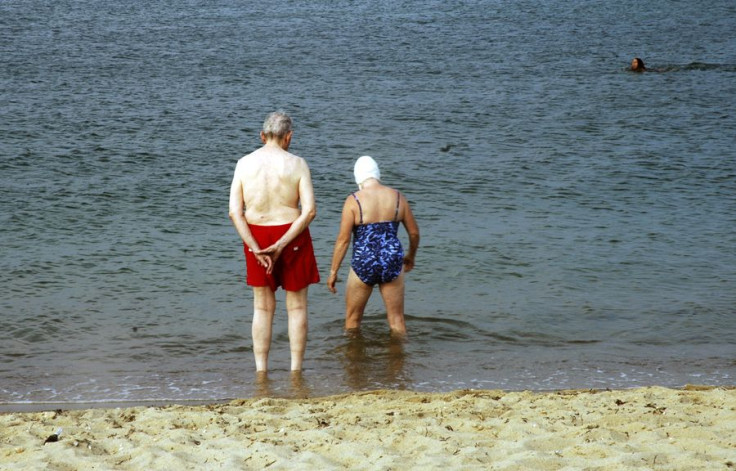Exercise Helps Elderly Lower Risk Of Death; Even Light Activity Found Beneficial

Science has some good news for older adults: It doesn’t really matter what you do to keep active, so long as you’re getting up and moving. New research from France has found the traditional guidelines for physical activity — the intensity equivalent of a minimum of 150 minutes of brisk walking per week — don’t apply to the elderly, whose daily requirements are far less demanding.
In a recent study, Dr. David Hupin, of the Department of Clinical and Exercise Physiology at the University Hospital of St-Etienne-Lyon, joined his colleagues to investigate how much exercise seniors need to reduce their risk of death. Over a 13-year period, the team found people were still 51 percent less likely to die even if they got very low levels of activity compared to the bare minimum. Overall, they found a dose-dependent outcome: The more exercise a person got, the lower their risk of death over the trial period.
How To Stay Fit
While the Centers for Disease Control and Prevention recommends adults over 65 get a minimum of 150 minutes of exercise per week, they give people options for hitting that benchmark. For one, the CDC concedes it doesn’t really matter how the minutes get logged, as long as they come in at least 10-minute intervals. The rest is up to the exerciser.
Nearly all movements are beneficial, though research has found several forms of activity tend to rise above the rest given the ancillary risks older adults face as they age: mobility, flexibility, stamina, and the ability to withstand falls.
4. Cycling
Unless people make an active effort to go bike riding, decades might pass before adults get their feet back on the pedals. Time and again, scientists have found cycling affords older adults boosts in both their physical health and mental dexterity.
Cycling improves leg strength, which is necessary for two of the most important actions in old age: getting in and out of chairs and climbing the stairs. It also improves lung capacity, trains coordination and balance, and keeps the hip joints mobile.
3. Brisk Walking
Brisk walking is the go-to activity for a reason. It’s perhaps the simplest way for people to improve their overall health, lubricating the joints of the hips, knees, and ankles. It strengthens the heart muscle and keeps blood pressure low. A study in 2011 found a person’s gait speed has a direct connection to his predicted survival rate with age — good news, as nearly all adults end up walking faster than necessary without even trying.
2. Gymnastics
Most gymnasts might begin at 6 or 7 years old, but the upsides of starting the sport late in life are huge. Staying mobile is one of the great downfalls for older adults; without the ability to perform daily tasks independently, their mental health and quality of life suffer. At base, gymnastics targets people’s ability to stay flexible. Like cycling, it prepares people for falls and develops strength, coordination, and balance. It’s also just plain fun.
1. Swimming
As low-impact exercises go, swimming reigns supreme. Even the CDC extolls the benefits of swimming among older adults, as it has been found to soothe chronic inflammatory conditions like arthritis, rheumatoid arthritis, and osteoarthritis. Unlike running or walking, swimming keeps joint-sensitive adults cushioned in the water. For the same reason, it preserves bone health in post-menopausal women.
It’s also been found to improve mental health in both men and women, although, as scientists have repeatedly found, just about any exercise will release those endorphins. Combine that with people getting a little out of breath in the process, and chances are they’re on the right track.



























